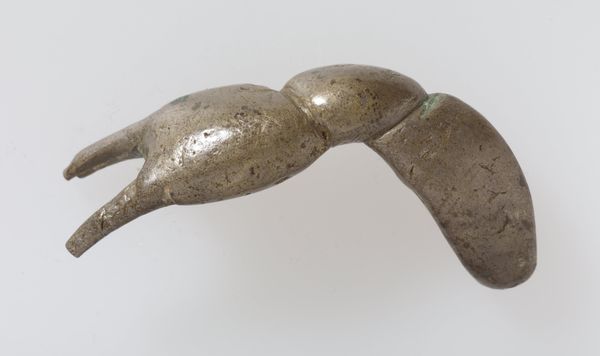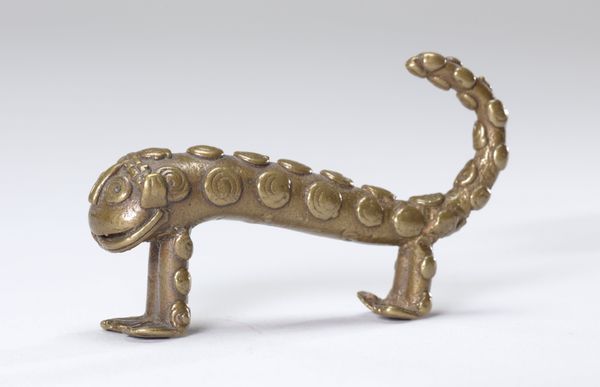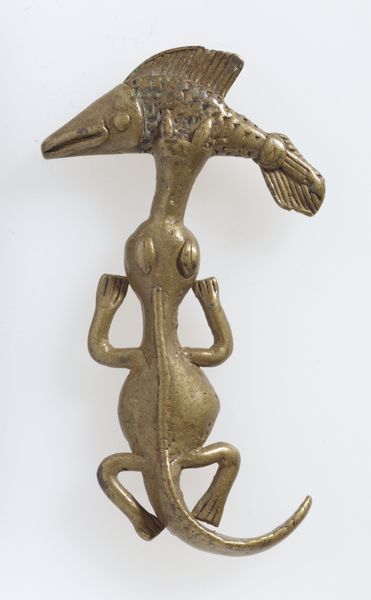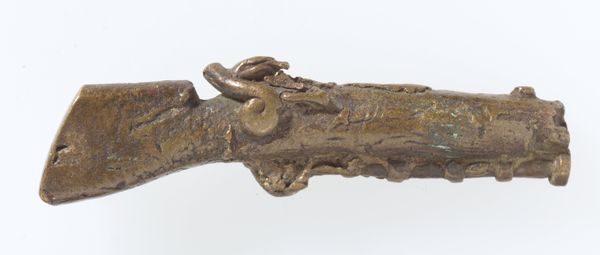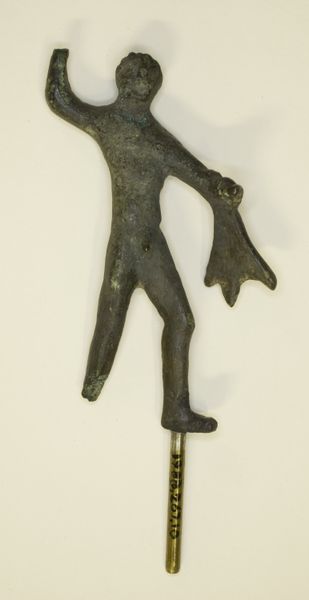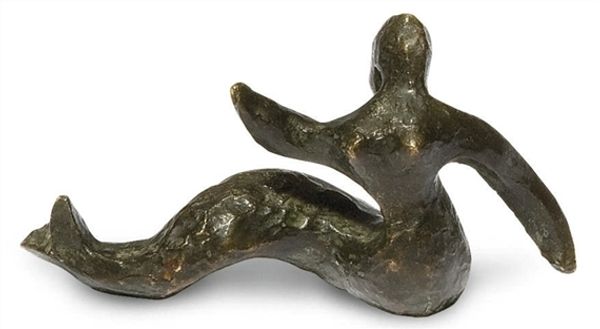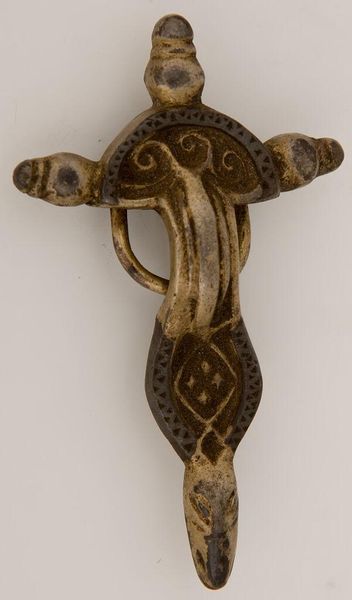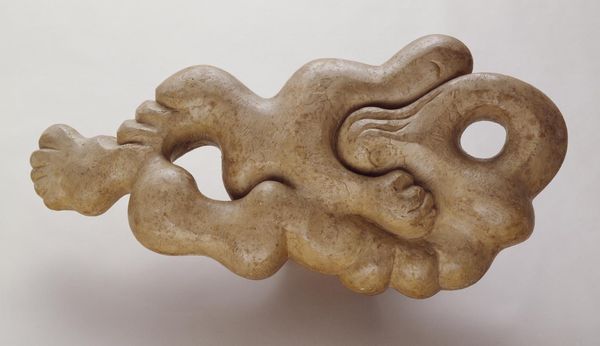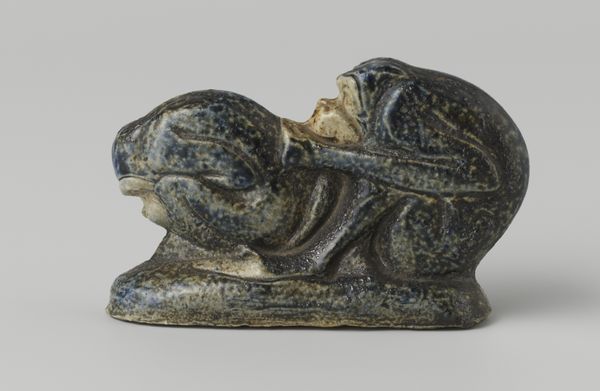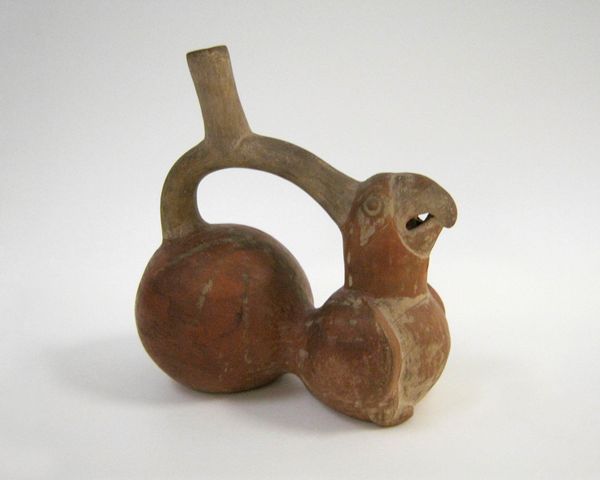![Goldweight [Camel] by Akan](/_next/image?url=https%3A%2F%2Fd2w8kbdekdi1gv.cloudfront.net%2FeyJidWNrZXQiOiAiYXJ0ZXJhLWltYWdlcy1idWNrZXQiLCAia2V5IjogImFydHdvcmtzL2E4YTQyMDg5LTQ0YzEtNGIzOC05MjczLTQwN2ZiYjhlZTQzMS9hOGE0MjA4OS00NGMxLTRiMzgtOTI3My00MDdmYmI4ZWU0MzFfZnVsbC5qcGciLCAiZWRpdHMiOiB7InJlc2l6ZSI6IHsid2lkdGgiOiAxOTIwLCAiaGVpZ2h0IjogMTkyMCwgImZpdCI6ICJpbnNpZGUifX19&w=3840&q=75)
brass, sculpture
#
african-art
#
brass
#
sculpture
#
sculpture
Dimensions: 1 3/8 x 3/4 x 3 3/16 in. (3.49 x 1.91 x 8.1 cm)
Copyright: Public Domain
Curator: Here we have an intriguing example of an Akan goldweight, dating from the 19th to 20th century, currently held at the Minneapolis Institute of Art. It takes the form of a camel and is rendered in brass. Editor: It possesses a peculiar stoicism, doesn’t it? The burnished patina lends an air of antiquity, while the almost comical proportions - that slender, elongated neck juxtaposed with the plump body – give it an idiosyncratic charm. It almost feels intentionally abstracted. Curator: These goldweights, you see, were integral to Akan society in Ghana, West Africa, serving as a system of measurement on scales to ensure fairness and precision in commerce. They’re not merely weights, though. The camel, for instance, far from its natural habitat, speaks volumes. Editor: Its form certainly grabs me. The craftsmanship is quite striking— the head is so realistically depicted despite the stylized legs. And what about that screw holding the eye in place? How curious! Curator: Indeed. The presence of the camel underscores trans-Saharan trade and, by extension, global interconnectedness. The Akan people greatly prized gold, and their system of weights became an extension of their moral and cultural values. Camels themselves embody endurance, resilience, and even wealth across other cultures. Editor: Considering the form, I think its abstract representation suggests less of a literal depiction and more of the idea of long travel for trade, of faraway places, maybe even of some exoticism to attract buyers and sellers to use the scales, instilling trust in a mysterious object. Curator: Perhaps so, but ultimately, it all boils down to value – both economic and symbolic. These goldweights were far more than utilitarian tools, becoming veritable emblems of status and belonging within the Akan community. Editor: Thinking of it that way is fascinating – a touchstone for exchange, an everyday object made precious by both use and intent. I see now that it asks how we attach symbolic weight to daily items. Curator: And how these symbols become interwoven with our sense of self.
Comments
No comments
Be the first to comment and join the conversation on the ultimate creative platform.

